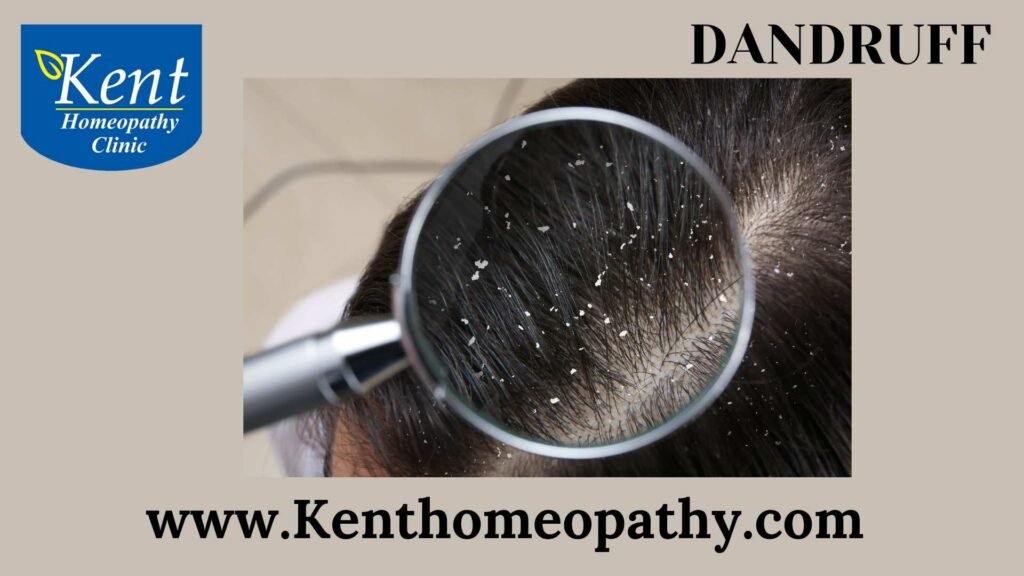Dandruff / Scaling of the Scalp

Dandruff is a common scalp condition characterized by the shedding of small, white flakes of dead skin. While it is usually harmless, dandruff can be bothersome and may lead to self-consciousness. Understanding the symptoms, causes, and types of dandruff is essential for effective management.
Symptoms:
- White Flakes: The most noticeable symptom is the presence of white, oily or dry flakes on the scalp and in the hair.
- Itchy Scalp: Dandruff is often accompanied by an itchy scalp, which can lead to scratching.
- Redness: Scratching the scalp may cause irritation and redness.
- Oily Scalp: In some cases, dandruff is associated with an oily or greasy scalp.
Causes:
- Malassezia Yeast: The most common cause of dandruff is the overgrowth of a yeast-like fungus called Malassezia. This fungus is naturally present on the scalp but can proliferate, leading to increased skin cell turnover and flaking.
- 2. Dry Skin: Dry skin on the scalp can result in small, dry flakes that resemble dandruff.
- Seborrheic Dermatitis: A more severe form of dandruff, seborrheic dermatitis involves red, inflamed skin and greasy, yellowish scales. It often affects areas with more oil glands, including the scalp, face, and chest.
- Not Cleaning Hair Regularly: Infrequent shampooing can lead to the accumulation of oil and dead skin cells on the scalp, contributing to dandruff.
- Sensitive Skin: Individuals with sensitive skin may be more prone to developing dandruff.
- Certain Hair Care Products: The use of hair care products that irritate the scalp or trigger an allergic reaction can contribute to dandruff.
- Medical Conditions: Certain medical conditions, such as psoriasis or eczema, can lead to dandruff-like symptoms.
Types:
- Dry Skin-Related Dandruff: Often characterized by small, dry flakes, this type is associated with insufficient moisture on the scalp.
- Oily Scalp-Related Dandruff: In this type, large, oily flakes may be present, and the scalp tends to be greasier. It is associated with the overproduction of oil and the presence of Malassezia yeast.
- Seborrheic Dermatitis: This form of dandruff involves red, inflamed skin, and greasy, yellowish scales. It may extend beyond the scalp to other oily areas like the face and chest.
It’s essential to choose a dandruff treatment based on the specific cause, and individuals with persistent or severe symptoms should consult with a healthcare professional for personalized recommendations. Maintaining good scalp hygiene and addressing underlying causes can significantly reduce dandruff symptoms.
Contact to know more
Contact
Powai: 52, Galleria Mall,
Central Avenue, Hiranandani Gardens,
Powai, Mumbai-400076
Mobile Number: 08291492566
Timings
Monday to Saturday:
11:00 AM to 02:30 PM
06:30 PM to 09:00 PM
